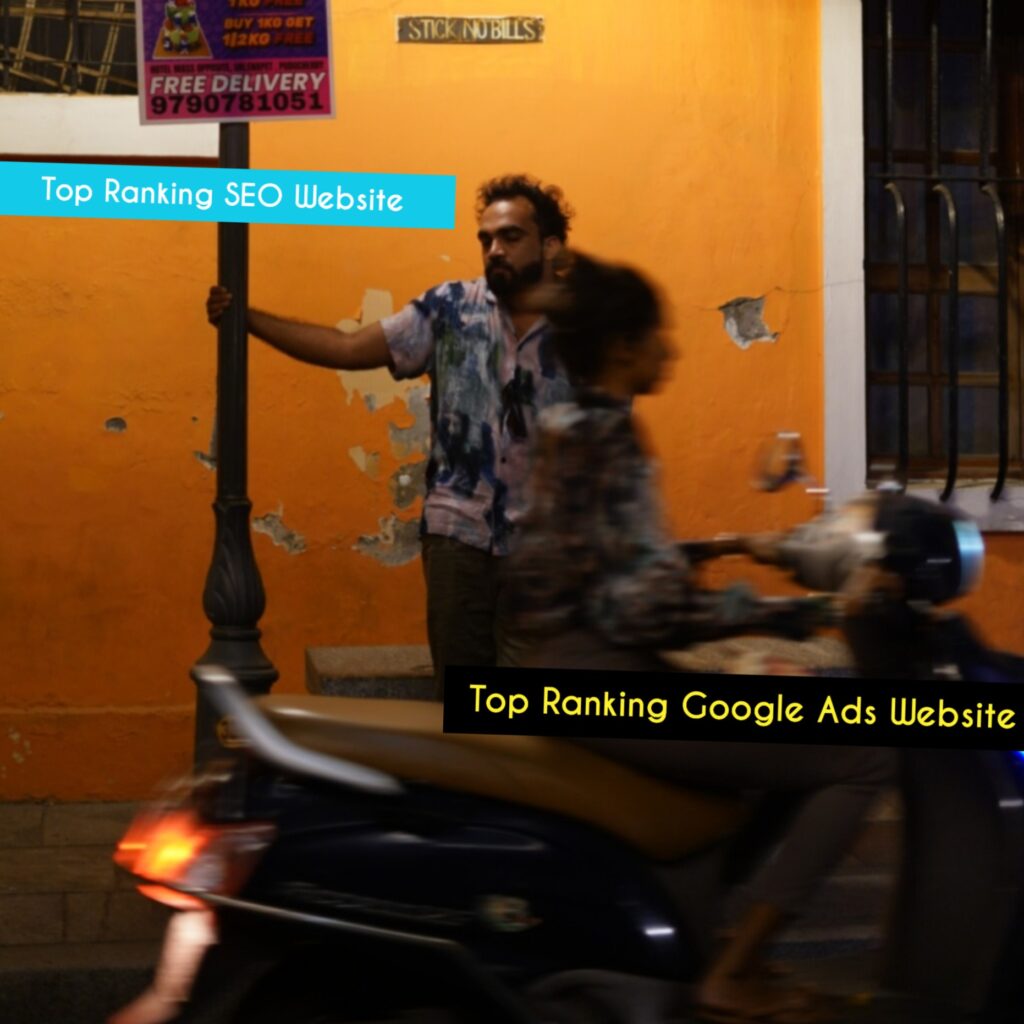
The image metaphorically shows the dynamics of S.E.O and Google Ads strategies:
S.E.O: Represented by a static figure leaning on a lamp post, it symbolises stability, patience, and persistence. S.E.O takes time to build but offers consistent, long-term visibility and trust.
Google Ads: The fast-moving scooter portrays the urgency and speed of paid ads—quick results and immediate visibility. However, like the fleeting motion of the scooter, traffic stops when the budget runs out. Just as a vehicle stops when it runs out of fuel
💡 Notice something else?
The image also highlights how Google Ads websites are always ahead of S.E.O websites in search results. Paid ads appear right at the top, capturing attention immediately, while S.E.O works in the background, steadily climbing the ranks for a more sustainable presence.
The comparison between a top-ranking SEO website and a top-ranking Google Ads website highlights different approaches to gaining visibility online. Here’s an analysis:
- Top-Ranking S.E.O Website
Traffic Source: Organic search engine results.
Cost: Typically low in terms of ongoing expenses after initial investment in content creation, optimization, and technical S.E.O. However, time and effort are required to achieve and maintain rankings.
Sustainability: Long-term strategy. Once ranked, it can continue driving traffic for an extended period with minimal maintenance.
Credibility: Often perceived as more trustworthy by users, as it appears naturally in search results.
Engagement: Can attract users at all stages of the buyer’s journey, from awareness to decision-making.
Performance Metrics: Relies on CTR (click-through rate), bounce rate, and dwell time. A strong content strategy improves conversion.
- Top-Ranking Google Ads Website
Traffic Source: Paid search results (PPC – Pay Per Click).
Cost: High cost due to continuous ad spend. Advertisers pay for every click, with costs varying based on competition for keywords.
Sustainability: Short-term strategy. Traffic stops as soon as the ads are turned off.
Credibility: Some users might skip ads, perceiving them as less trustworthy than organic results.
Engagement: Targets users with high intent (e.g., transactional queries) by bidding on commercial keywords.
Performance Metrics: Focuses on Cost Per Click (CPC), Conversion Rate, and ROI. Ad copy and landing pages are crucial for performance.
Key Differences
Which Is Better?
For long-term growth and cost-effectiveness, SEO is ideal.
For immediate results and specific campaigns, Google Ads work best.
Best Practice: Use both together. A combined strategy can maximise visibility, attract diverse traffic, and achieve both short-term and long-term goals.